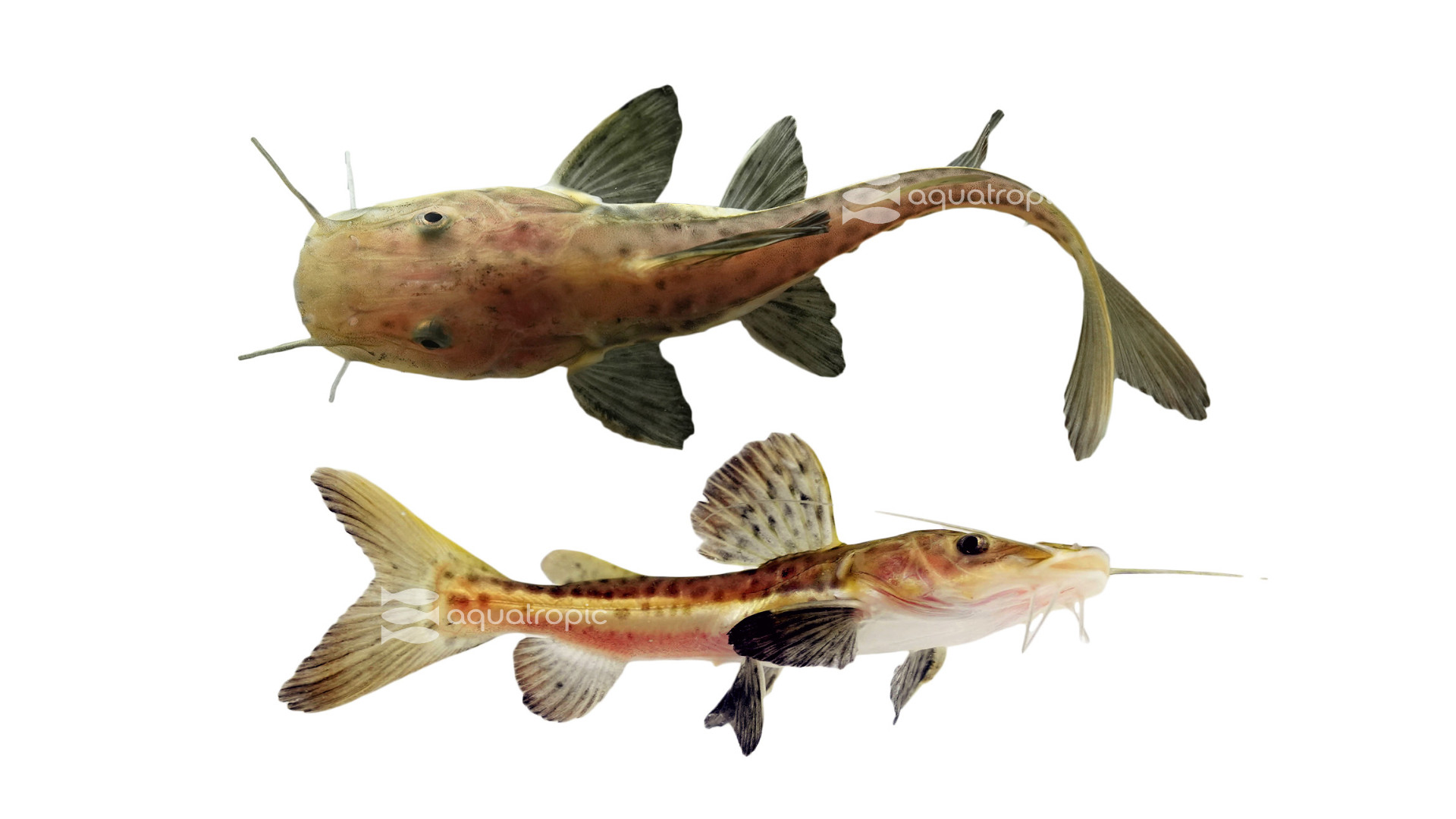Yellow Tail Leopard Monster

There is a myriad of aquarium fish that we call “Monster.” Indeed, there are even forums solely dedicated to the keeping of these fish. While the fish considered “monster” belong to many species, genus and family, a large number of them, and indeed likely the biggest of them, are catfish. Among the most popular of these fish are the Red-Tailed Catfish, a bruiser with a mindboggling record size more than four feet long and nearly 100 lbs, and the Shovel Nose Catfish, no slouch for size either with a record size over 40 inches and approaching 70 pounds! Obviously, both of these fish will require specialist display, and are frequently relegated to being the most amazing of pond fish. What happens when they are hybridized?
It results in a fish we call a Yellow Tail Leopard Hybrid Catfish; we've seen them marketed with a huge variety of names, and if you take the words: Red-Tailed, Yellow-Tailed, Leopard, Tiger, Shovelnose and Hybrid, use them in any order and add Catfish on the end, you'll either come up with one of them, or make a new one that fits. This is a fish that was bred in south America as a food fish when biologists crossed these two massive fish to encourage something called “hybrid vigor.” Hybrid vigor is a phenomenon in which the offspring of two species is healthier, grows bigger and grows faster than either of its parent species. This experiment worked; and as an added bonus, the two very beautiful parent fish made a spectacularly beautiful offspring fish as well.
The growth rate, hardiness and delicious nature of this fish made it immediately popular as a choice for food-based aquaculture and that is still its primary commercial value. It can be harvested very quickly at a marketable size and is sought after for its culinary qualities. As a result, it is still being produced throughout the Americas for this purpose. It's incredible size and strength have resulted in it being a very popular sport fish as well, and it has been introduced to many private lakes and ponds for anglers to target. There are some reports of Yellow Tail Leopard Hybrid Catfish being released into major water systems in South America for the same activity. The veracity of these claims, as well as the scope and impact of this activity is somewhat unknown at this point.
More recently, the gorgeous appearance and interesting behavior of this hybrid has resulted in it making its way into our aquariums, where they are most welcome. This is a hardy, easy to keep fish with demands that nearly all hobbyists can achieve with one exception, the size of the tank. As of the writing of this, we don't really know how big this fish can get. When grown as food, they are harvested years before they achieve the stunning proportions of their parentage. We can assume that they are likely to get in excess of three feet long and over 50 pounds in a good environment. It is possible that they could get even larger. This being said, this fish will need a pool, (or pool sized aquarium) or a pond at full adult size.
Other than the size of the container you keep them in, these are incredibly easy fish to keep. Their aquacultured history means they accept a pretty wide variety of environments. If your aquarium has a pH around 7 and a stable temperature in the high 70s, these will be fine. While both parent fish come from water that is soft and slightly acidic, this shouldn't be much of a concern as most of these hybrids available to the North American hobby are now being produced domestically in water that is harder and slightly more basic than what would have been their original home.
Yellow Tail Leopard Hybrid Catfish will eat just about anything. They will take a large sinking pellet and are being fed Nutramar's 12mm “Freshwater Complete” pellets in house. Like any large catfish, they will like larger meals as they grow. Small fish, prawns, and live earthworms are all good foods, at full size, you'll need to feed them market size fish like trout. In addition, catfish, especially larger ones, don't need food every day. If your cat isn't actively hunting for something to eat, it probably doesn't need food. A large meal every other, or even every third day is plenty.
Speaking of meals, these hybrids are fish eaters. Keep this in mind if you are going to place them in displays with other fish. They will eat any fish they can fit in their mouths, and this is a surprisingly large mouth. Good choices for tank mates would be other massive Catfish, some freshwater Sharks, Pacus, Oscars, Arowanas, and Peacock Bass. When the Yellow Tail Leopard Hybrid Catfish hits full size, even Oscars and some Peacocks may be in peril. We don't recommend mixing these (or other massive catfish) with rays as sometimes (for some unknown reason) catfish think they can eat a bigger ray than they are capable of, and this ends badly for both fish.
If you're the kind of fish geek looking for a monster, this is it. The Yellow Tail Leopard Hybrid Catfish has all the beauty and intrigue of either of its parents, but a rarity that neither can claim. They are easy to keep and grow to a who-knows-how-big size. For those of you with exotic tropical ponds, this would be a perfect addition. Be prepared to give them an outsized home, and these will be the among the hugest of all your friends fishes. Or for those of you so inclined, harvest them for food someday, they are absolutely delicious. Regardless of your end goals, if you're interested in trying your hand at raising these gorgeous cats, head to your Local Fish Store and ask for one of these Aquacultured Yellow Tail Leopard Hybrid Catfish from Aquatropic today!